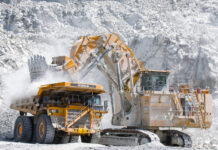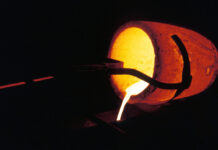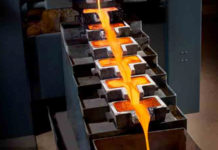THE strategy behind the proposed demerger of AngloGold Ashanti’s South African gold mines was to give special focus to the ageing mines as well as helping improve the overall investment appeal of the demerged company by diversifying into other minerals – a strategy quite similar to the one taken by Sibanye Gold.
As it turned out, the plan was scuppered by shareholders in 2014 who thought that raising over R2bn worth of cash ahead of the demerger was too expensive a price to pay for the larger group to be rid of the South African mines.
‘Rid’ is not a word AngloGold has ever used in respect of its involvement in South Africa, but the coming months and years may underline why the mines don’t figure highly in its growth plans, especially as AngloGold progresses under the sure and steady hand of its CEO, Srinivasan Venkatakrishnan.
All of the company’s growth projects outlined by Venkatakrishnan earlier this month are outside South Africa, including some $115m (R1.5bn) which would be spent expanding its Siguiri mine in Guinea extending the life of mine four years to 2023.
There are also greenfields project studies in Colombia at AngloGold’s La Colosa, Gramalote and Quebradona prospects which were described by Ron Largent, head of AngloGold’s international division, as “moving the needle” in terms of reserves.
The approach to the South African mines appears to be a process of harvesting. This is sometimes a dirty word in the mining world because ‘high grading’ a mineral resource can be interpreted a bit like a slash and burn retreat. However, the operating statistics tend to show AngloGold has been driving higher grades on lower tonnages in the past 18 months.
Since the half-year point in its 2014 financial year, when the company was recording an average grade from its South African mines of about six grams per tonne (g/t), the average grade has increased to between 7g/t and 8g/t while tonnes mined has fallen to about 1.5 million tonnes per quarter from about two million tonnes previously.
This has had the desired effect.
In addition to cost control improvements, and a large degree of restructuring, AngloGold’s South African mines have achieved an all-in sustaining cash margin of about 20% when it was only just about breaking even in the first half of 2014. As a whole, the South African mines provided 28% of AngloGold’s gold production in the six months to June and a respectable 24% of pretax earnings.
But there may be more of the restructuring to come.
The group’s Kopanang mine produced a negative AISC margin in the half-year ended June even though the dollar gold price and the rand weakness against the dollar (for most of the period) were in its favour. Now that currencies, including the rand, have strengthened against the dollar, the mine can no longer expect the same degree of assistance.
SECTION 54s
The upshot of this is that the widely documented Section 54 work stoppages which cost AngloGold’s South African mines some 44,000 ounces in gold production are only working to hasten the inevitable decline of the mines, and speedier loss of jobs.
Section 54 notices, issued in terms of the Mine Healthy & Safety Act enable the South African government to shut an entire operating shaft whilst in investigates an accident and recommends a suitable round of mediation before re-opening.
The Department of Mineral Resources rightly points to the need for safety related interruptions in order to manage and decrease the number of fatalities on South Africa’s mines which have increased 18% this year compared to last year at the half-year stage. But AngloGold argues that the DMR’s heavy-handed manner is unnecessary and indiscriminate.
There’s no arguing with the facts. AngloGold’s South Africa mines are assets in decline in the absence of technology good enough to mine the very deep recesses of its orebodies, some four kilometres underground.
Gold production has fallen to about 500,000 ounces this year from some 1.3 million ounces at the same stage in the group’s 2006 financial year.











